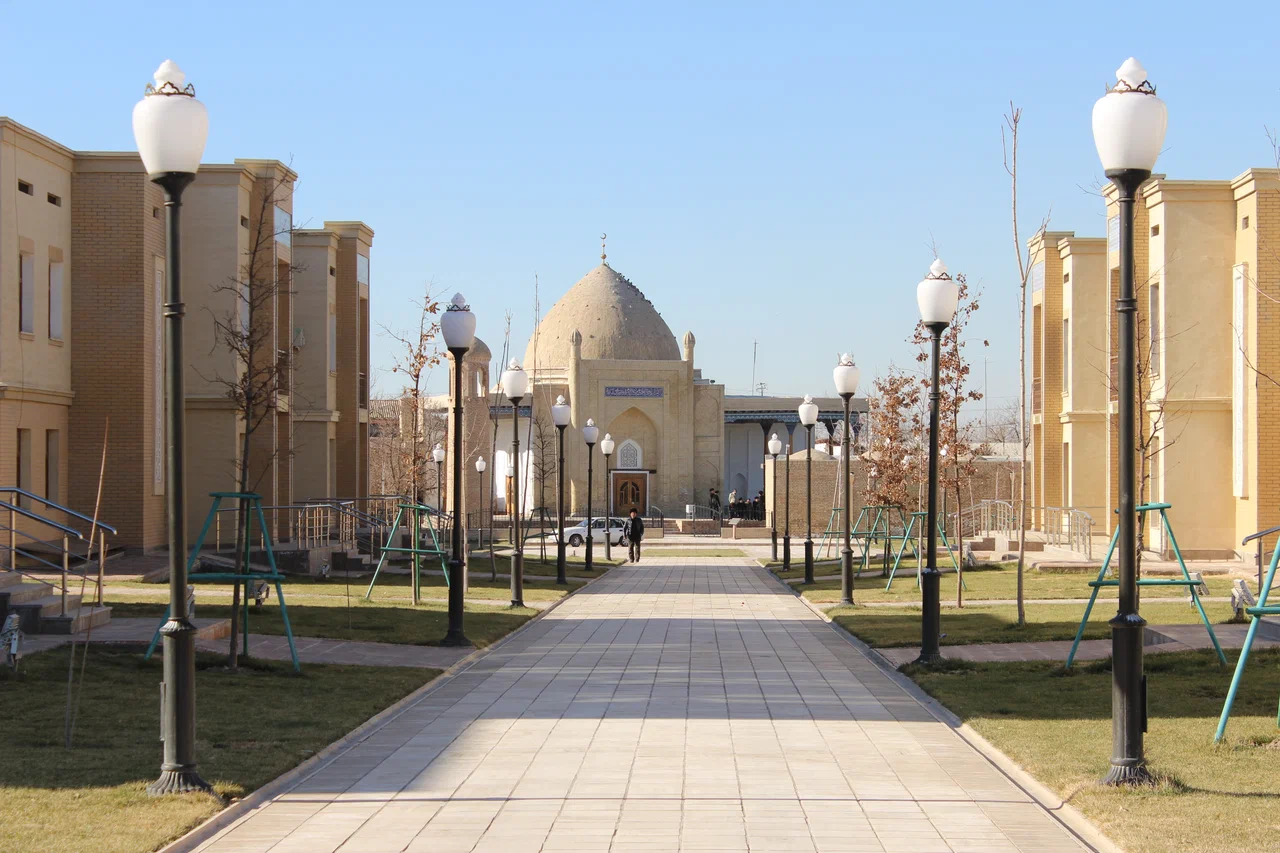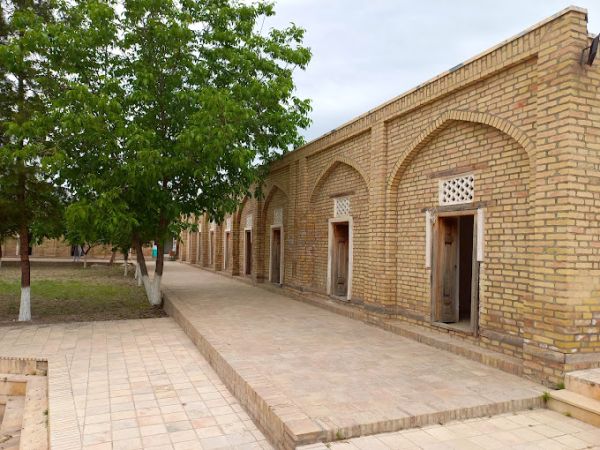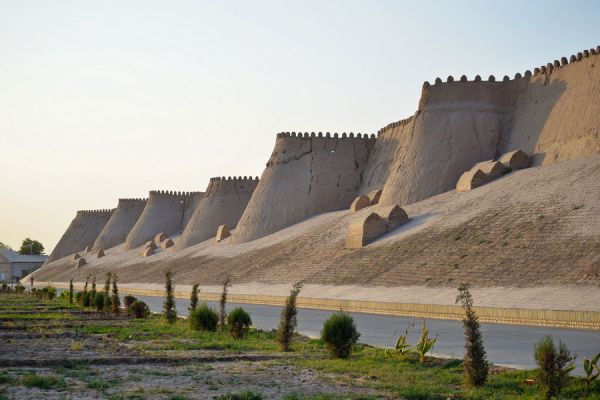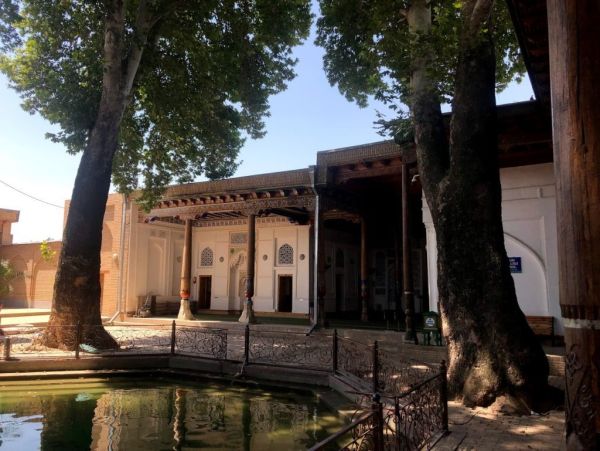Malik Ashtar Mosque
In the northeastern part of the historical center of Shakhrisabz, the historic Malik-Ashtar Mosque is located between residential buildings. According to legend, it was built next to the tomb of the Arab military commander Malik Ashtar.
Like the khanaka of Khojaa Mirhamid in the city of Shakhrisabz, the Malik-Ashtar Mosque complex also served as a madrasa in the past. This is evidenced by the hujras located around the perimeter and covered with domes.
The Malik Ashtar Mosque is a classic composition of an Islamic religious building. It symbolically embodies the basic elements of the universe: a prayer house made of mud, green trees, “hausa” water, a dome facing the sky, ivan pillars and a minaret.
The small town of Shakhrisabz (“green city”, Persian) is located just 90 km south of Samarkand, at the foot of the Gissar and Zeravshan mountains, at the confluence of the Aksu and Tankhoz rivers. This is one of the oldest cities in the world; according to some sources, human settlements on this site existed as early as 1700 BC. Alexander the Great's troops marched here, the Bactrian satrap Bess was captured, an anti-Arab movement arose, and the caravans of the Great Silk Road passed through. Ancient Kesh, the birthplace of Amir Temur and the former “home residence” of the Temurids, was once probably larger and richer than Samarkand itself.
Much is being done in Shakhrisabz to restore and reconstruct monuments of material culture. An independent scientific and restoration production workshop has been established here, which employs architects, designers, master builders, skilled wood and plaster carvers and other masters of applied art. The task of this large creative team is to restore the original appearance of medieval monuments and preserve the creations of the old masters for centuries to come.























